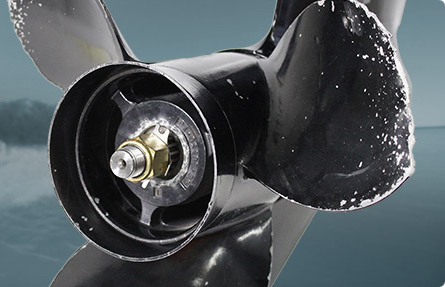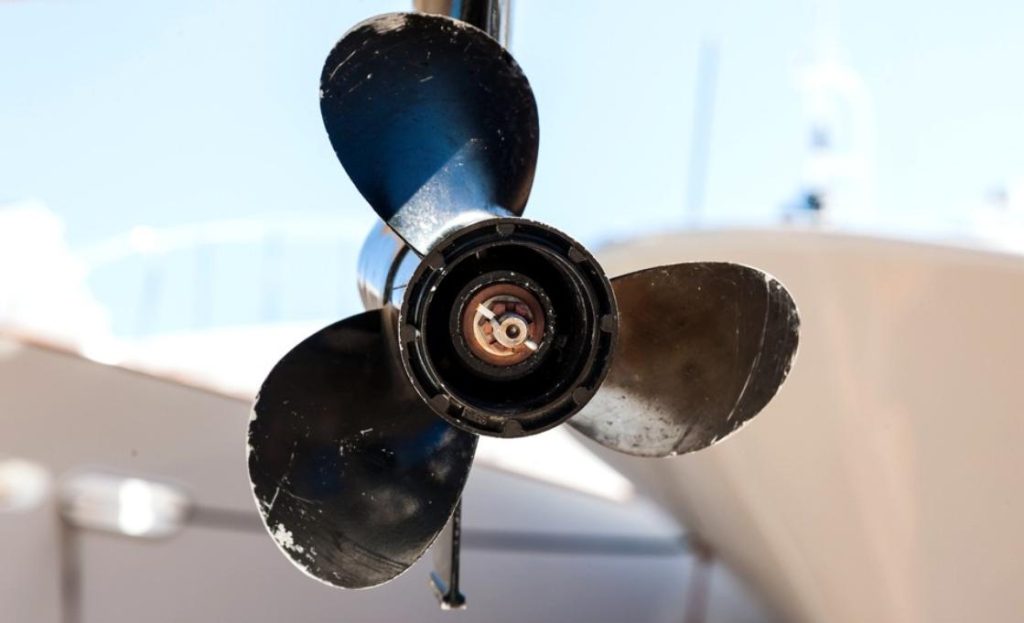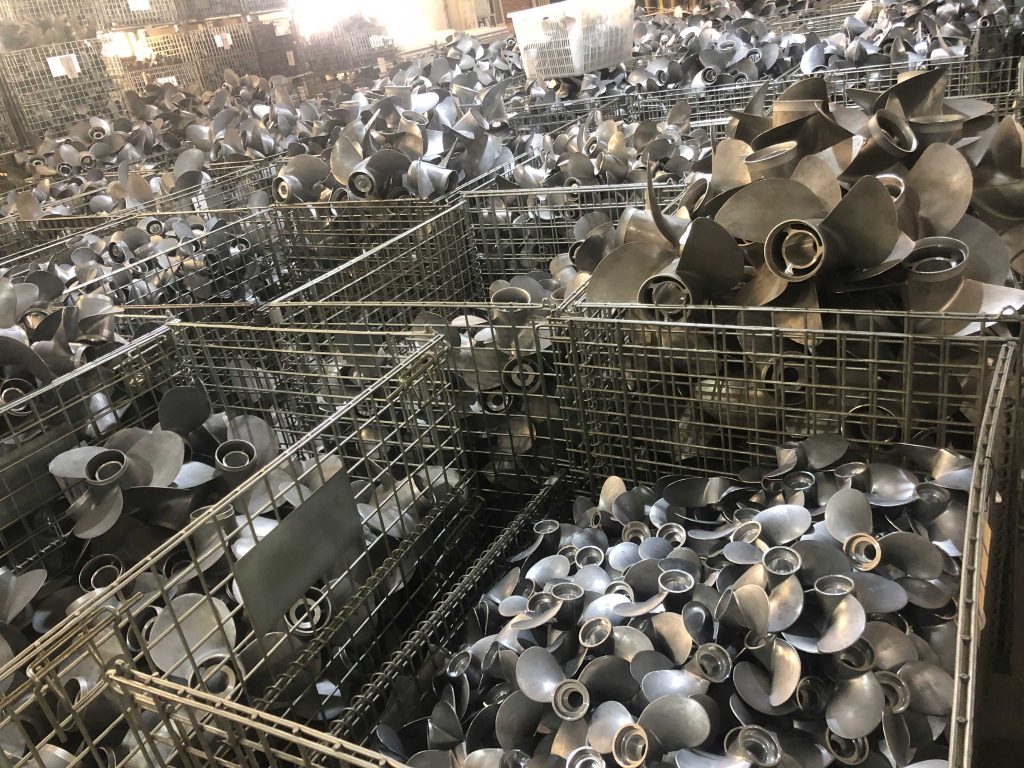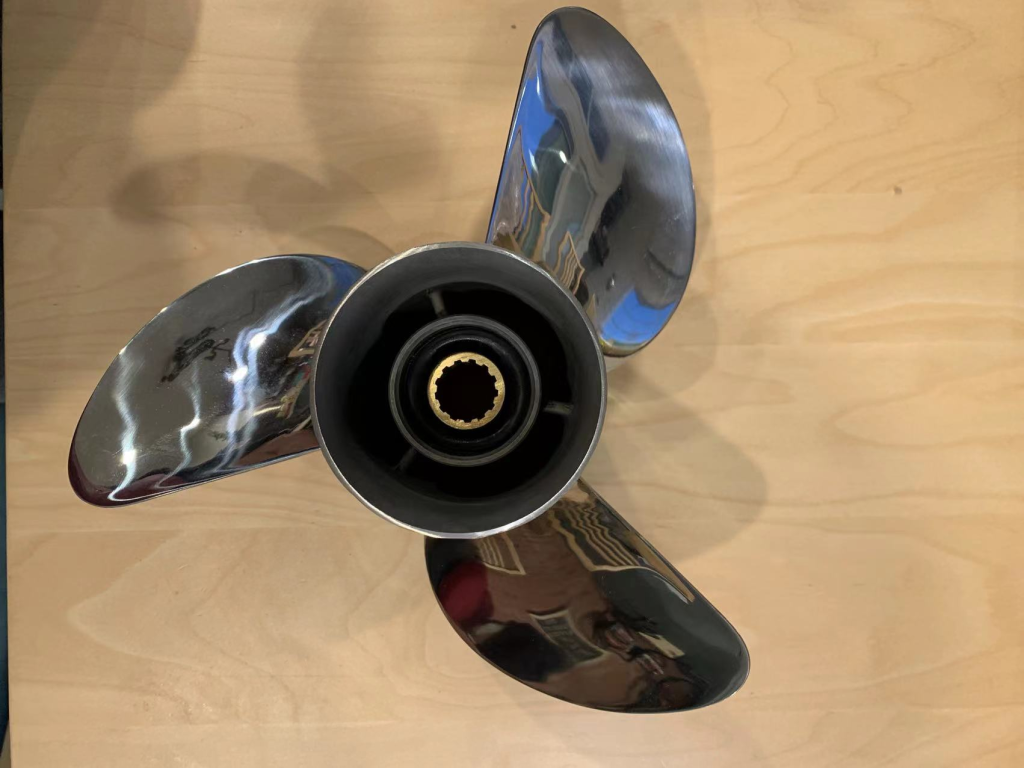Cavitation on a boat propeller occurs when the pressure of water around the propeller drops low enough to cause the water to vaporize and form small bubbles.
These bubbles collapse and create shock waves that can damage the propeller and reduce its efficiency. This can be caused by various factors such as high speed, high altitude, low water depth, and damaged or poorly designed propellers. It can also result in increased noise and vibration, reduced performance, and increased fuel consumption.
If cavitation occurs, I suggest you replace it with a new propeller to avoid greater losses later. This article will explain Cavitation On a Boat Propeller. After reading this article, you will understand the cavitation phenomenon better!

Cavitation can have a variety of effects on a vessel, including:
Reduced propulsive efficiency: Cavitation causes the pressure of the water flow to drop, which reduces the propulsive efficiency of the propeller.
Increased noise and vibration: Cavitation creates voids, which create strong shock waves when they collapse, increasing noise and vibration.
Damage to the propeller: Cavitation can cause bubbles and voids on the surface of the propeller, which create high pressure when they collapse, resulting in cracks and damage to the surface of the propeller.
Increased fuel consumption: Cavitation reduces the propeller’s propulsive efficiency, causing the vessel to require more fuel to maintain the same speed.
Therefore, cavitation is a problem to be avoided in ship operation, and a series of measures need to be taken to reduce its impact.

How to repair propeller cavitation
Repairing a propeller damaged by cavitation can be a complex process that requires specialized skills and equipment. Here are some general steps that may be involved in repairing a cavitation-damaged propeller:
Inspection: The propeller needs to be thoroughly inspected to determine the extent and location of the cavitation damage. This may involve removing the propeller from the boat and performing non-destructive testing (NDT) to identify any cracks or other damage that may not be visible to the naked eye.
Welding: If the damage is minor, it may be possible to repair it by welding. This involves filling in the cavitation pits or cracks with a suitable welding material. The welding process needs to be carefully controlled to ensure that the propeller is not further damaged.
Grinding and polishing: After welding, the propeller needs to be ground and polished to restore its original shape and smooth surface finish. This may involve using specialized equipment, such as a propeller polishing machine.
Balancing: Once the propeller has been repaired, it needs to be balanced to ensure that it rotates smoothly and does not cause excessive vibration. This may involve using a dynamic balancing machine to measure the propeller’s balance and make any necessary adjustments.
It’s important to note that propeller repair is a specialized field that requires expertise and experience. It’s recommended to seek the services of a professional propeller repair company to ensure that the repair is done correctly and safely.

To maintain the propeller in good condition, here are some recommendations for regular maintenance:
Clean the propeller regularly: Dirt, algae, and other debris can accumulate on the propeller blades, causing drag and reducing efficiency. It is recommended to clean the propeller regularly to prevent this buildup.
Inspect the propeller for damage: Check the propeller regularly for any signs of damage, such as cracks, chips, or dents. If any damage is found, it should be repaired as soon as possible to prevent further damage.
Lubricate the propeller shaft: The propeller shaft should be lubricated regularly to reduce friction and wear. Use a high-quality marine grease for this purpose.
Check the propeller alignment: Misalignment of the propeller can cause excessive vibration and reduce efficiency. It is recommended to check the alignment of the propeller periodically and make any necessary adjustments.
Replace worn propeller parts: Over time, the propeller blades, hub, and other components may become worn and need to be replaced. It is important to replace these parts as needed to maintain the propeller’s performance and efficiency.
Use a propeller cover: When the boat is not in use, it is recommended to use a propeller cover to protect the propeller from damage and corrosion.
Overall, regular maintenance is essential for keeping the propeller in good condition and ensuring optimal performance and efficiency. It is recommended to follow the manufacturer’s guidelines for maintenance and consult with a professional if any issues arise.
Discover the Hidden Benefits of Repairing or Replacing a Damaged Propeller
Are you aware of the many benefits that come with repairing or replacing a damaged propeller on your outboard or sterndrive? While it’s true that a repaired or replaced propeller can enhance your boat’s performance, there are other compelling reasons to consider this option.
Propellers are precision-engineered parts that can be easily ruined by minor imperfections such as nicks and abrasions. These imperfections reduce the effectiveness of the propeller, resulting in a loss of performance that can be magnified as the speed of the prop increases. This is why it’s crucial to repair or replace a damaged propeller as soon as possible.
Minor damage to blades can be corrected with filing and sanding. However, if the blades are cracked, bent or deformed, it’s best to replace the propeller with a new one. Fortunately, propellers are relatively inexpensive these days, and buying a new one is often cheaper than repairing an old one.
There are many reasons why you should repair or replace a damaged propeller. For instance, a damaged propeller can increase fuel consumption, cause stress on the outboard or sterndrive, and even fail and leave you stranded. These three reasons alone should be enough to convince you that fixing a damaged propeller or replacing it altogether with a new one has its benefits.
Don’t let minor imperfections ruin your boat’s performance and put you at risk of costly repairs. Repair or replace your damaged propeller today and enjoy a smoother, more efficient boating experience.
Why Repair/Replace a Damaged Propeller
Other than the fact that you should repair or replace any boat parts that are damaged, consider the following reasons for fixing or swapping out a propeller.
Damaged propellers can:
Increase fuel consumption
Cause stress on the outboard or sterndrive
Fail and leave you stranded
These three reasons alone should be enough to convince you that fixing a damaged propeller or replacing it altogether with a new one has its benefits.
Conclusion About What Is Cavitation On a Boat Propeller And Solutions To Propeller Cavitation
The extent to which cavitation damages a vessel depends on the severity and duration of cavitation. In mild cases, cavitation may cause only a slight reduction in the vessel’s propulsion efficiency, but no significant damage to the propeller. In severe cases, cavitation can cause cracks and damage to the propeller surface, resulting in a significant decrease in the vessel’s propulsion efficiency. In addition, cavitation can increase noise and vibration, adversely affecting the comfort and safety of the vessel.
If cavitation lasts for a long time, serious corrosion and wear may occur on the surface of the propeller, which may cause the life of the propeller to be greatly shortened. Therefore, it is very important to take timely measures to avoid the occurrence and aggravation of cavitation for the protection of ships and the extension of propeller life.


